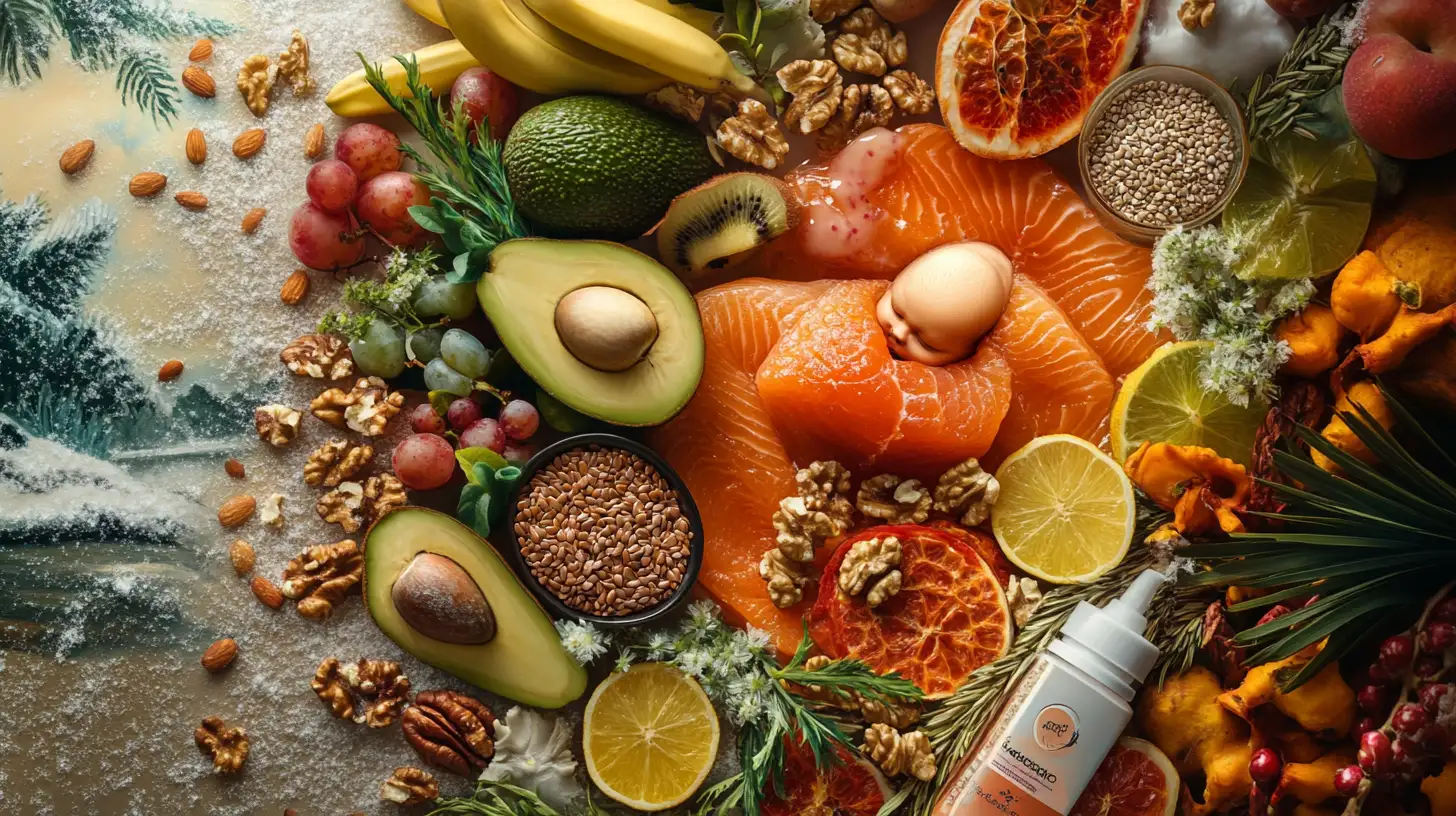Table of Contents
Toggle7 Minutes to Baby Skin Bliss: Transform Your Little One’s Winter Skin Struggles
Have you ever noticed how your baby’s perfect, delicate skin seems to change overnight when winter arrives? Those adorable chubby cheeks suddenly becoming red and irritated, little elbows rough to the touch, and that heartbreaking moment when you realize your precious one is uncomfortable in their own skin. I remember standing in my daughter’s nursery at 3 AM, feeling completely helpless as she squirmed and fussed because of her dry, itchy skin.
In this post, I’m going to share something I truly wish I had known sooner – something that would have saved my little one (and me!) countless nights of discomfort and worry. And I recently shared these exact tips with my sister who just had her first baby and was panicking about the sudden appearance of dry patches and redness as the temperature dropped.
You see, I used to think that if I just found the perfect lotion, the magic cream, or the most expensive baby skincare product, I’d solve all our winter skin woes. I’d spend hours researching products, reading reviews, and emptying my wallet on promises in pretty packages. But what I discovered changed everything about how I approach my baby’s sensitive skin in winter.
The truth is, the way to protect your baby’s skin isn’t what you think. It’s not about finding that one miracle product. It’s about understanding what’s really happening to their delicate skin barrier and creating a comprehensive approach that works specifically for your unique little one. And when you get this right, you’ll watch those uncomfortable patches disappear and see your baby’s natural, beautiful skin shine through – even in the harshest winter conditions.

Why Your Baby’s Skin Struggles in Winter (And Why It’s Not Your Fault)
This may sound crazy, but the more products you’ve been trying to fix your baby’s skin, the worse it might actually be getting. Have you felt that frustration of applying lotion after lotion, only to see the dry patches or eczema flare-ups getting worse? I’ve been there, mixing and matching products, desperately searching for that perfect combination.
Here’s what’s really happening. Baby skin is about 20% thinner than adult skin and produces fewer natural oils. In winter, the drop in humidity combined with indoor heating creates the perfect storm for moisture loss. And when you add sensitive skin or eczema to the equation, it’s like the skin barrier has tiny invisible cracks that let moisture escape even faster.
Growing up in the Caribbean, I never had to worry about these things. The humidity was our constant companion, keeping skin naturally moisturized. But when I moved north and had my baby during winter, I was completely unprepared for how dramatically the climate would affect her skin. I remember calling my mother back home, desperately seeking her wisdom, only to realize she had never dealt with these specific challenges!
The biggest mistake most parents make? We think by caring deeply and trying everything, we’ll solve the problem. We believe if we just want healthy skin for our babies badly enough and try hard enough, it will happen. But sometimes, this approach leads to product overload, which can further irritate sensitive skin.
Instead of fixating on finding that perfect product, what if we stepped back and looked at the whole picture? What if addressing your baby’s winter skin needs isn’t about doing more, but about doing different? Because when you understand what’s really happening beneath the surface, you start to move differently, show up differently, and make choices that actually work.

The Gentle Cleansing Revolution: Less is More Powerful
I used to think that cleanliness was next to godliness, especially for my precious baby. Bath time was a nightly ritual with bubbles, multiple products, and plenty of scrubbing to ensure every fold was spotlessly clean. But when winter came and my daughter’s skin started looking like tiny desert landscapes, I realized something had to change.
Here’s a truth that transformed our routine: overwashing is the silent enemy of baby’s winter skin. Each time you cleanse, you’re potentially stripping away natural oils that your baby’s skin desperately needs to maintain its protective barrier.
My Caribbean grandmother always said, Water cleanses the soul, but too much washes away your essence. She wasn’t talking about skincare, but her wisdom applies perfectly. For babies with sensitive skin in winter, consider these gentle cleansing principles:
- Reduce bath frequency to 2-3 times per week for babies over three months (unless visibly dirty)
- Keep baths short – 5-10 minutes maximum
- Use lukewarm water (hot water further dries the skin)
- Choose fragrance-free, pH-balanced cleansers specifically formulated for sensitive skin
- Apply cleanser only to truly dirty areas (diaper area, hands, face, neck folds)
- Pat dry gently – never rub
When selecting cleansers, look for keywords like fragrance-free (not just unscented), pH-balanced, and hypoallergenic. Ingredients like colloidal oatmeal, ceramides, and glycerin can be particularly beneficial for sensitive skin.
The most powerful change I made? Swapping our conventional baby wash for an ultra-gentle cleanser with minimal ingredients. Within days, the redness around my daughter’s cheeks and neck folds began to subside. It wasn’t about finding the most expensive product – it was about finding the most appropriate one for her specific needs.
Remember, you don’t need bubbles and strong fragrances to get your baby clean. In fact, those attractive features often come from the very ingredients that can irritate sensitive skin. When you stop caring about having an Instagram-perfect bath time and start focusing on what your baby’s skin actually needs, that’s when healing begins.

The Moisture Miracle: Timing and Technique Transform Everything
The irony of baby skincare is that sometimes we try so hard that we actually make things worse. I remember slathering my daughter with expensive creams multiple times a day, desperately hoping to fix her dry patches, only to see them become more inflamed and irritated. What I didn’t realize was that it wasn’t just about what I was using, but how and when I was using it.
Here’s the game-changer: the three-minute rule. After bath time, you have approximately three minutes to lock in moisture before it begins evaporating from the skin. This is your golden window of opportunity. Instead of thoroughly drying your baby, gently pat their skin, leaving it slightly damp. Then immediately – and I mean immediately – apply moisturizer to seal in that precious hydration.
My grandmother from the islands taught me about layering protection. On windy days, she would apply coconut oil to our skin before we went outside, creating a barrier against the elements. For babies with sensitive winter skin, we need to adopt a similar layering approach:
- Layer 1: Hydration (water-based ingredients like glycerin or hyaluronic acid)
- Layer 2: Moisture (emollients like shea butter or ceramides)
- Layer 3: Occlusion (protective ingredients like petrolatum or dimethicone)
For severe dryness or eczema-prone skin, consider the wet wrap technique that transformed our nights. After applying moisturizer, dress your baby in damp cotton clothes or wraps, followed by a dry layer on top. This can be done for just 15-30 minutes or overnight if necessary, and it dramatically increases moisture absorption.
But here’s the most important part – consistency outweighs perfection. It’s better to apply a simple, appropriate moisturizer consistently than to intermittently use the most expensive cream on the market. When I stopped chasing the perfect product and instead focused on creating a reliable routine that worked for our family, that’s when we saw real improvement.
The best moisturizers for sensitive baby skin in winter often contain ingredients like ceramides (which help rebuild the skin barrier), colloidal oatmeal (for soothing properties), or shea butter (for deep moisture without greasiness). For severe dryness, don’t be afraid of petrolatum-based products – they create an effective moisture seal that can be truly transformative for compromised skin.

Environmental Defense: Your Home as a Healing Space
Sometimes we get so focused on what we’re putting on our baby’s skin that we forget about the environment that surrounds it. I spent months meticulously applying creams and oils before I realized that the air in our home was literally sucking moisture from my daughter’s skin every minute of the day.
The heating systems that keep us warm in winter are often the biggest culprits behind dry baby skin. They reduce indoor humidity to desert-like levels, sometimes as low as 10-20%. For comparison, the ideal humidity for healthy skin is between 40-60%.
I thought back to my island home, where the natural humidity kept our skin supple year-round. How could I recreate some of that moisture-rich environment in our winter home? The solution was simpler than I expected:
- Place a good-quality humidifier in your baby’s room (and other rooms where they spend significant time)
- Use cool mist rather than warm mist for safety
- Clean the humidifier regularly to prevent mold growth
- Aim for indoor humidity levels between 40-50%
- Consider a humidity monitor to ensure you’re maintaining optimal levels
Beyond humidity, other environmental factors can make a dramatic difference in your baby’s skin health during winter:
- Dress your baby in layers of soft, breathable fabrics (cotton and silk are excellent choices)
- Avoid wool or synthetic fabrics directly against sensitive skin
- Wash new clothes before wearing to remove potential irritants
- Use fragrance-free laundry detergent specially formulated for sensitive skin
- Skip fabric softeners and dryer sheets, which leave residue that can irritate
The most surprising change we made? Switching from regular cotton sheets to silk pillowcases and sleep sacks. The smooth surface created less friction against my daughter’s skin, and the natural proteins in silk helped retain moisture. While this was a splurge, it made a noticeable difference in the appearance of her cheeks and helped prevent the sleep creases that often became irritated patches.
When you create an environment that supports your baby’s skin barrier rather than challenging it, you’re giving their natural healing processes the best chance to work. This is when you become truly powerful – not by fighting against your baby’s skin condition, but by creating the conditions where healing naturally occurs.

The Foods That Heal From Within
This may be surprising, but what goes into your baby’s body can be just as important as what goes onto their skin. I discovered this by accident when my daughter’s skin would mysteriously improve or worsen despite maintaining the same external skincare routine.
If you’re breastfeeding, your diet influences your milk composition, which directly affects your baby’s skin. For formula-fed babies, the specific formula you choose can make a significant difference in how their skin responds during winter months.
My Caribbean upbringing taught me about the power of natural foods for healing. My grandmother would always say, Your medicine should be your food, and your food should be your medicine. Here’s how to apply this wisdom to winter skin protection:
For breastfeeding mothers, consider increasing these skin-supporting nutrients:
- Omega-3 fatty acids (from fatty fish, walnuts, flaxseeds)
- Vitamin E (from avocados, nuts, seeds)
- Zinc (from pumpkin seeds, legumes, whole grains)
- Vitamin D (supplementation may be necessary during winter months)
For babies starting solids, gradually introduce foods rich in healthy fats and skin-supporting nutrients:
- Avocado (rich in healthy fats and vitamin E)
- Sweet potato (high in beta-carotene for skin health)
- Coconut (traditional skin-supporting food in tropical cultures)
- Ground flaxseed (can be added to purees for omega-3s)
- Mango and papaya (tropical fruits with skin-supporting vitamins)
I noticed a remarkable difference when I incorporated more omega-3 rich foods into my diet while breastfeeding. Within two weeks, my daughter’s persistent dry patches began to soften and improve. For formula-fed babies, ask your pediatrician about formulas containing DHA/ARA (fatty acids that support skin barrier function) if your baby shows signs of sensitive skin.
Hydration is another crucial factor often overlooked in winter. Both you (if breastfeeding) and your baby need adequate fluid intake to support skin hydration from within. Babies can become dehydrated more quickly in winter due to heated environments, even if they’re not visibly sweating.
The most powerful approach combines internal and external support – nourishing foods that build healthy skin cells from within, paired with appropriate external moisture to protect the skin barrier. When these work in harmony, that’s when the magic happens.
When to Seek Help: Letting Go of Perfect
I think the hardest lesson I had to learn as a parent was when to let go and ask for help. I remember feeling like I had somehow failed because I couldn’t solve my daughter’s skin issues on my own. I’d try one more cream, one more technique, always believing that if I just cared enough or tried hard enough, I could fix everything.
But here’s the truth that freed me: seeking professional help isn’t giving up – it’s being the most dedicated advocate for your child. Some skin conditions require medical intervention, and that’s not a reflection of your parenting.
Know when to call your pediatrician or dermatologist:
- If dry skin cracks or begins to bleed
- If your baby seems uncomfortable or is scratching excessively
- If you notice yellow crusting, oozing, or signs of infection
- If dry patches don’t improve after a week of consistent home care
- If your baby develops a sudden rash or hives
- If skin issues are accompanied by other symptoms like fever
The irony is that often, once I let go of needing to solve everything myself and consulted our pediatrician, solutions came more easily. For us, it was a mild prescription hydrocortisone cream used sparingly and strategically that finally helped break the cycle of inflammation during a particularly bad flare-up.
Remember the law of detachment I mentioned earlier? It applies here too. You put in your best effort, but then you must let go of the outcome and be open to different paths to healing. Sometimes the best thing you can do is recognize when your baby needs more than what you alone can provide.
And here’s something my Caribbean grandmother would say that always brings me comfort: The strongest trees bend with the wind. Being flexible in your approach to your baby’s skin care – willing to adjust, seek new information, and accept help – is not weakness. It’s your greatest strength as a parent.
The Journey Forward: Your Baby’s Comfort Is Your Success
Have you noticed how when you stop obsessing over something, that’s often when solutions appear? It was only when I stopped frantically trying every product on the market and instead focused on creating a consistent, simple routine that my daughter’s skin began to truly heal.
The power of your approach to your baby’s winter skin care isn’t in finding that one perfect product or technique. It’s in creating a holistic system that works for your unique baby and your unique family situation. And when you embrace this bigger-picture thinking, everything changes.
Remember that what matters most isn’t having the most Instagram-worthy bath routine or the trendiest baby skin products. What matters is your baby’s comfort and the health of their skin barrier. When you make decisions based on these priorities rather than external pressures or perfectionism, you’ll find your way to solutions that actually work.
My daughter is now three years old, and while we still have to be mindful of her sensitive skin during winter months, it no longer controls our lives or keeps us up at night. We have our routine, we know what works, and we adjust as needed without the panic that once characterized our approach.
Wherever you are in your journey with your baby’s winter skin challenges, know this: you are already winning by caring enough to learn and adapt. Your baby doesn’t need perfect skin or a perfect parent – they just need you, showing up consistently with love and attention to their needs.
As my grandmother always said, Love is the best moisturizer. And while I still recommend actually using real moisturizer (she was speaking metaphorically!), there’s profound truth in her words. Your patient, consistent care is the foundation of your baby’s skin health.
So take a deep breath. You’ve got this. Your baby’s skin will get through this winter, and so will you. And maybe, just maybe, you’ll look back on this challenging time as I do now – grateful for the lessons it taught you about letting go of perfection and embracing what truly matters.
Thank you for being here with me today. I hope these insights help you and your little one find comfort during the winter months ahead. Remember, it’s not about being perfect – it’s about being present, consistent, and compassionate with both your baby and yourself.
Step into Sue Brown's World of Baby Care, where you'll find a treasure trove of knowledge and wisdom waiting to be explored. Sue's dedication to providing accurate and up-to-date information on baby care shines through in every article, blog post, and resource she shares. From newborn essentials to sleep training tips, breastfeeding advice to nurturing your baby's development, Sue covers a wide range of topics that are essential for every parent to know. Her warm and compassionate approach creates a sense of community and reassurance, making her website a safe haven for parents seeking guidance and support. Let Sue Brown be your partner in this beautiful journey of parenthood, as she empowers you to create a loving, nurturing, and thriving environment for your little one.
- Indoor Air Quality for Infant Respiratory Health - October 20, 2025
- Positive Discipline Foundations: Setting the Stage From Infancy - October 18, 2025
- 2025’s Most Innovative Baby Products Worth the Investment - October 16, 2025



